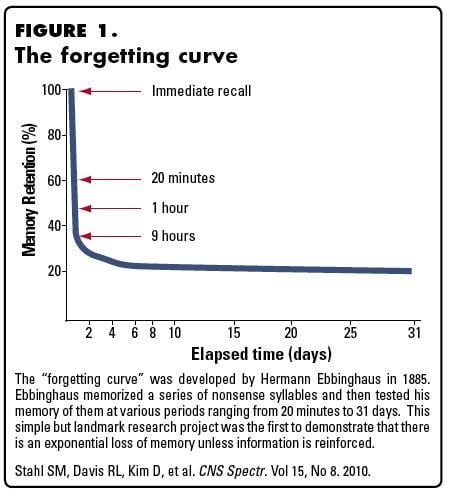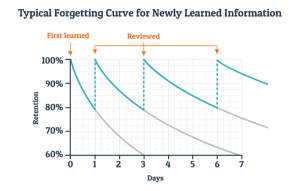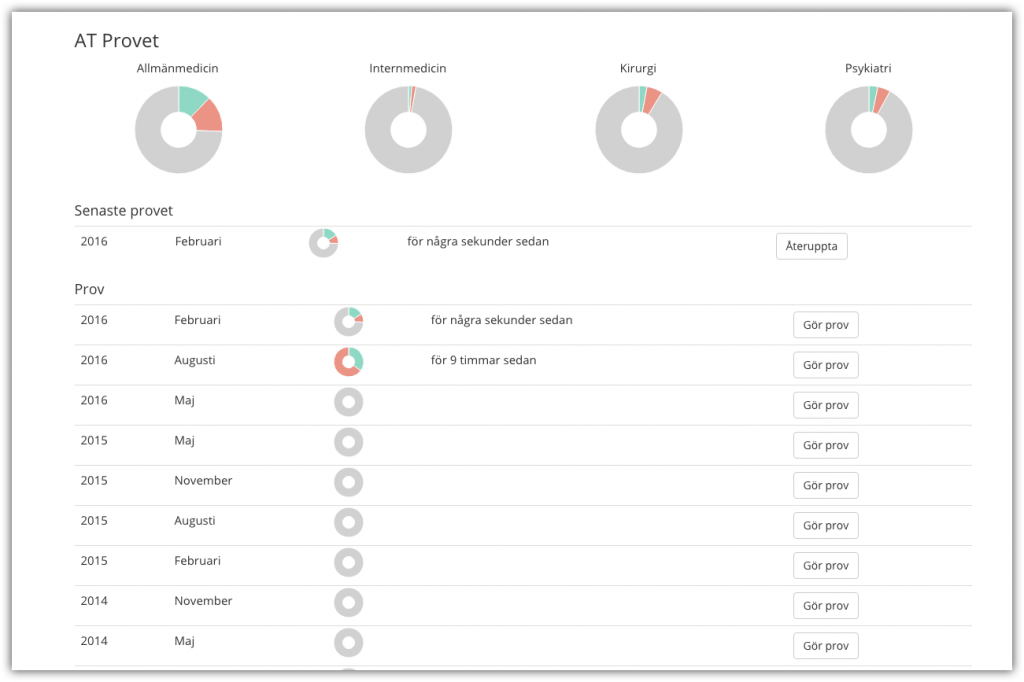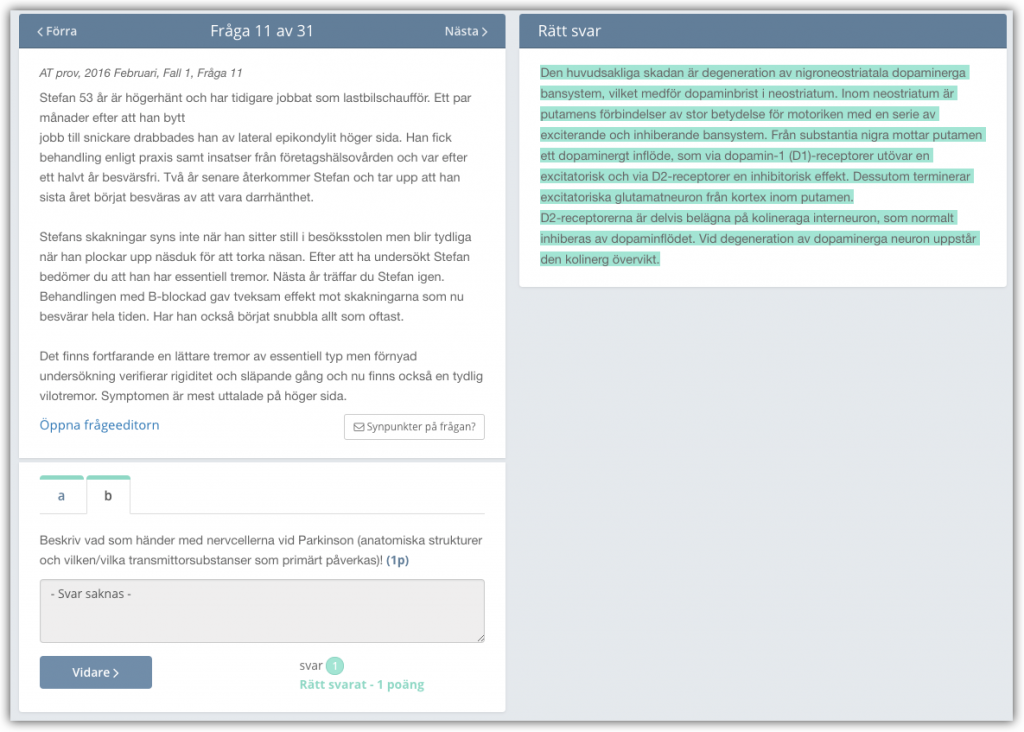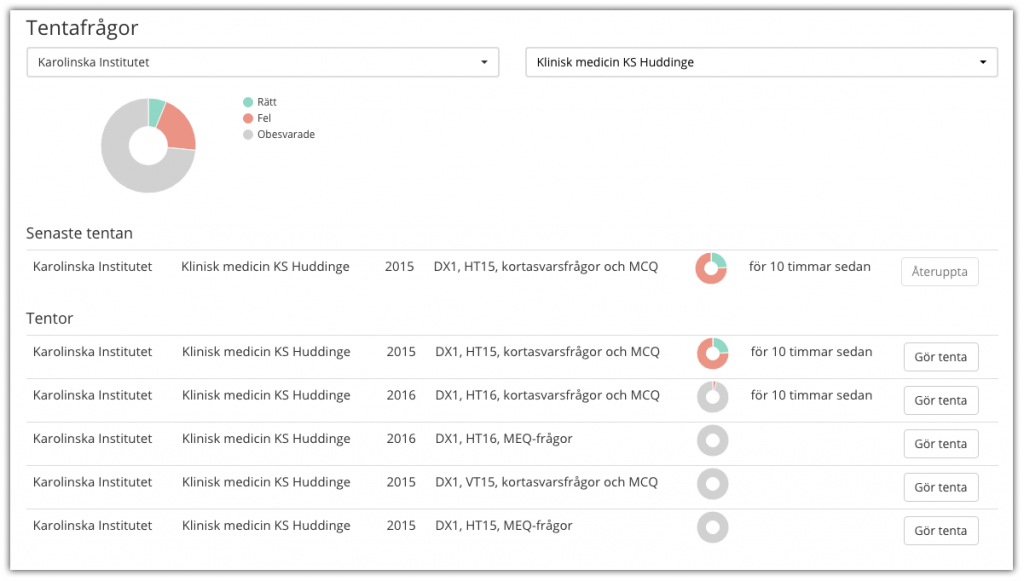Everyone has different ways of studying. As a student, it is common to look for methods where you can optimize learning per unit of time. One problem with trying to learn as much as possible per unit of time is that it can sometimes compete with getting what you learn to stick in long-term memory. Something that most people have experienced at least once is to procrastinate until the exam approaches and then try to squeeze in all the information needed to pass the exam, in memory. This study method is called cramming. The difference when you start studying from the start of the term is that most of the information appears on several occasions, in other words, more repetition times are spread over a longer period, which leads to better storage in the long-term memory. What happens when cramming, when you only process the information at one occasion, is that the speed at which you forget i higher.
Cramming
To explain the negative aspects of cramming, we can take the help of Robert Bjork, a researcher in psychology at UCLA and an expert in the area of learning and memory retention.
“Cramming can actually be a good thing to do from the standpoint of your getting a grade. If you don’t know the material and haven’t appropriately spaced your study across the term, … if you stay up all night, study, cram whatever and walk into the exam, you can actually perform pretty well on that exam…”
“But the problem is not too long after that, this massed practice will lead to …very poor retention. So as far as the material in that course carrying over to other courses, to your life in general, it’s an awful thing to do. “
See Björk’s entire lecture at: https://www.youtube.com/watch?v=TTo35X2rqls
How quickly one forgets has been an area that has been studied since the 19th century when a scientist began to experiment with his own memory. By studying a series of syllables and then measuring how many of these he remembered day 1, day 2, etc. he realized that the decrease in how much he remembered over time was exponential. The man named Herman Ebbinghaus therefore named the so-called “Ebbinghaus forgetting curve”
The fact that information is so quickly forgotten is important in most study contexts and perhaps extra important in medical studies. The purpose of knowledge tests during e.g. medical education is not only to see that at any given time, each student manages to keep a sufficient amount of information in his head to pass a test. The knowledge will hopefully stay with the student to be able to access when needed in clinical situation. As efficient long-term storage as possible is therefore something invaluable in the medical context.
Better methods?
So how do you do to remember as much as possible as long as possible? Are there any shortcuts? The answer to that question is both yes and no. Learning large amounts of information requires effort and the effort itself is an important part of learning. In most cases, repetition is required for long-term storage. However, there is a shortcut for how to most effectively repeat the knowledge, a shortcut called spaced repetition.
So what is spaced repetition then?
By splitting the repetition sessions so that you repeat the knowledge just when you are about to forget it, you create a more time-efficient learning. For every time you repeat a certain fact, the time when you would have forgotten without repetition, it is postponed later in time. The intervals between rehearsals will therefore increase gradually.
So how effective is the method? Thousands of studies have found that spaced repetition is more effective than other types of repetition methods. However, the results vary in how effective it actually is. In a meta-study, it was found that students who use spaced repetition perform better than 67% of students who spend as much time for repetition but other repetition methods.
So why not use all spaced repetition?
Probably there are several reasons for this. In order to make use of the algorithm, software support is necessary, which has made it difficult to use before digitalisation. The second fact is that it requires intensive and consistent application by the student. The student must, over an extended period of time, continue to repeat to achieve the desired result, which can be strenuous. Cortexio’s goal with regard to spaced repetition is to integrate the repetition method into the students everyday workflow so that the load does not exceed the student’s ability to continue repeating without being burned out. In this way we not only create increased long-term storage, but also a sustainable study methodology.
Sources
Custers EJ, Ten Cate OT. Very long-term retention of basic science knowledge in doctors after graduation. . Med Educ. 2011 Apr;45(4):422-30. doi: 10.1111/j.1365-2923.2010.03889.x.
Donovan, J. J., & Radosevich, D. J. (1999). A meta-analytic review of the distribution of practice effect: Now you see it, now you don’t. Journal of Applied Psychology, 84(5), 795-805.
Robert Bjork – Spacing improves long-term retention. https://www.youtube.com/watch?v=TTo35X2rqls
Stahl SM, Davis RL, Kim DH, Lowe NG, Carlson RE, Fountain K, Grady MM. Play it Again: The Master Psychopharmacology Program as an Example of Interval Learning in Bite-Sized Portions. CNS Spectr. 2010 Aug;15(8):491-504. PMID:
Read more
Efficient memorization & what it’s good for. (psychology) http://www.gwern.net/Spaced%20repetition
The New England Journal of Medicine http://knowledgeplus.nejm.org/spaced-repetition-the-most-effective-way-to-learn/
Wired magazine, Want to Remember Everything You’ll Ever Learn? Surrender to This Algorithm
http://archive.wired.com/medtech/health/magazine/16-05/ff_wozniak?currentPage=all

